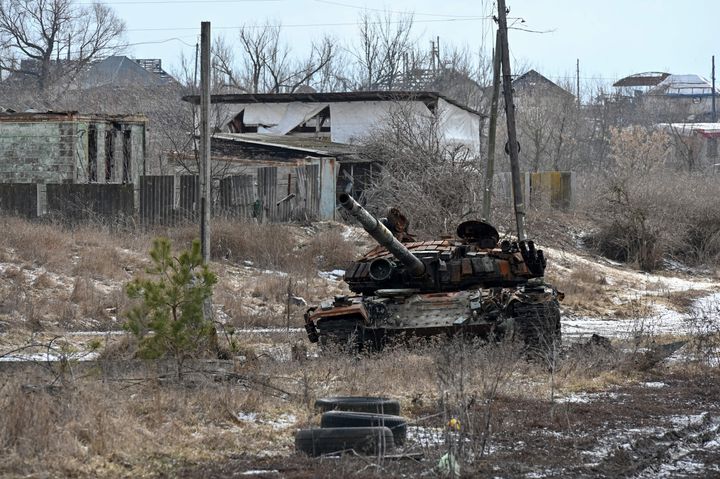
Russia is being forced to use 60-year-old tanks because of the heavy losses it has sustained in the Ukraine war.
According to the UK’s Ministry of Defence (MoD), the “vintage” T-62 vehicles have been brought out of storage and re-purposed so they can be sent into battle.
Armoured personnel carriers dating back to 1954 have also been deployed by Russia, the MoD said in its latest intelligence update.
It emerged yesterday that Russian reservists are being sent to war armed with shovels.
“The Russian military has continued to respond to heavy armoured vehicle losses by deploying 60-year-old T-62 main battle tanks (MBT),” the MoD said.
“There is a realistic possibility that even units of the 1st Guards Tank Army, supposedly Russia’s premier tank force, will be re-equipped with T-62s to make up for previous losses.”
The update went on: “In recent days, Russian BTR-50 armoured personnel carriers, first fielded in 1954, have also been identified deployed in Ukraine for the first time.
“Since summer 2022, approximately 800 T-62s have been taken from storage and some have received upgraded sighting systems which will highly likely improve their effectiveness at night.
“However, both these vintage vehicle types will present many vulnerabilities on the modern battlefield, including the absence of modern explosive reactive armour.”
In their update yesterday, the MoD said Russian mobilised reservists were “ordered to assault a Ukrainian concrete strong point armed with only ‘firearms and shovels’”.
One reservist described being “neither physically nor psychologically” prepared for the brutality of arm-to-arm combat.
The MoD said the shovels were likely MPL-50 “entrenching tools being employed for hand-to-hand combat”.
“Little changed since it was designed in 1869, its continued use as a weapon highlights the brutal and low-tech fighting which has come to characterise much of the war,” the intelligence update said.